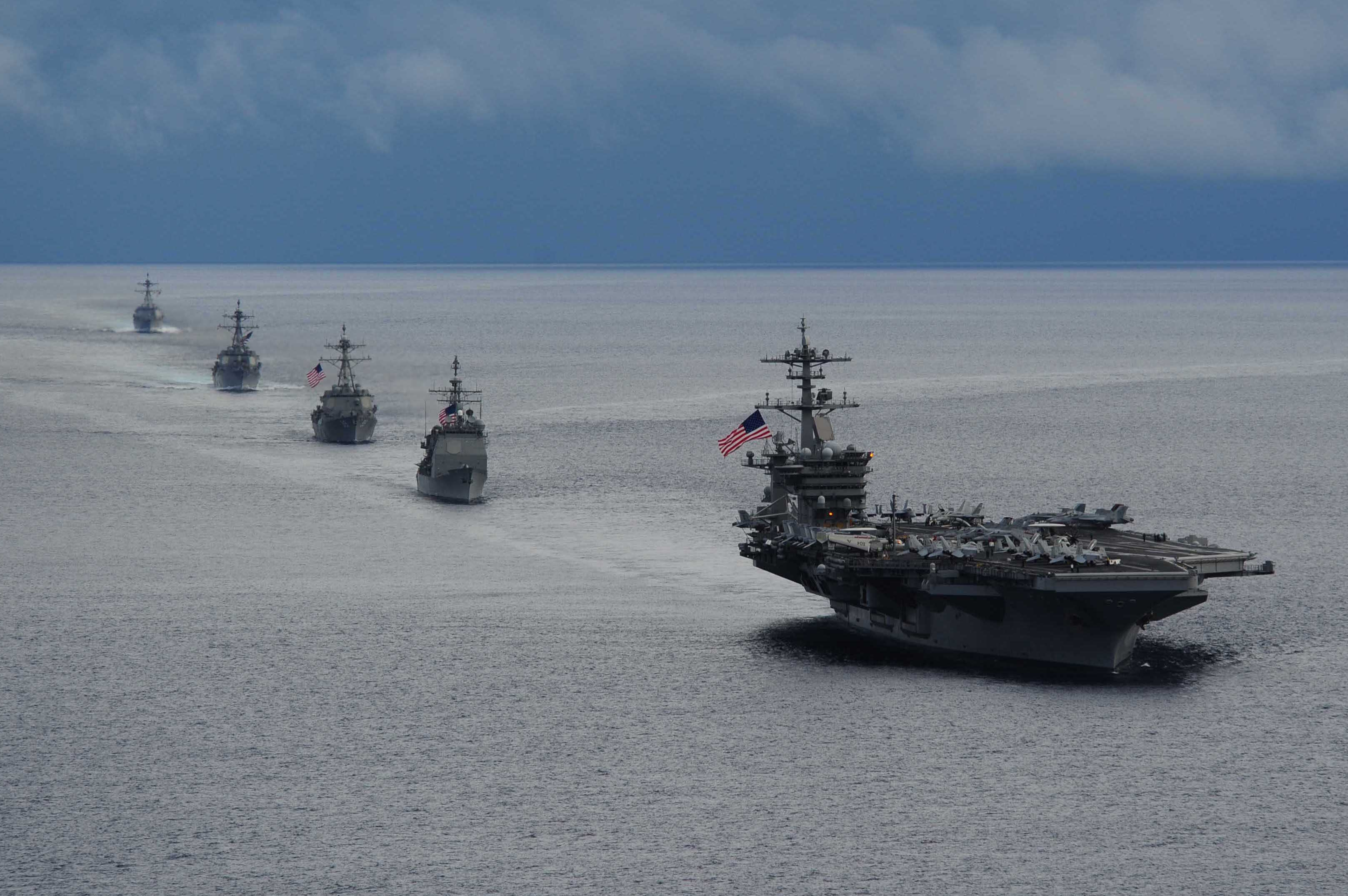
Just four days ahead of the 73rd anniversary of the attack on Pearl Harbor, the U.S. Navy announced its intention to award Huntington Ingalls Industries Inc (HII). approximately $4 billion to construct the USS John F. Kennedy (CVN-79) super carrier, the second vessel of the new Gerald R. Ford-class of carriers. The cost has raised eyebrows, as the Gerald R. Ford (CVN-78) experienced cost overruns of 22 percent.
Additionally, debate is raging over the utility of the aircraft carrier and whether it’s even relevant anymore in the face of China’s new, lethal anti-ship missiles. It’s a debate worth having, but it needs to be rooted in realistic naval principles and war precedents, not politics and hype.
Destroy the Enemy’s Fleet
Alfred T. Mahan, one of history’s preeminent naval theorists, wrote that the purpose of the navy, during war, is to command the sea by the destruction of the enemy’s fleet. It’s that simple of a principle. If Mahan were still alive, he likely would include destruction of the enemy’s surveillance, reconnaissance and command and control (C4ISR) assets as part of his concept. Accordingly, the U.S. Navy should be designed to destroy enemy ships and C4 ISR assets in the most economical and efficient manner possible. When misinterpreted precedents and hyper-partisan politics get in the way of that singular goal, it skews U.S. Navy doctrine and the ships and weaponry that compose the fleet. That, in turn, increases the risk of naval defeat, and the prospect of catastrophic national decline becomes real.
The Carrier Is Still Useful
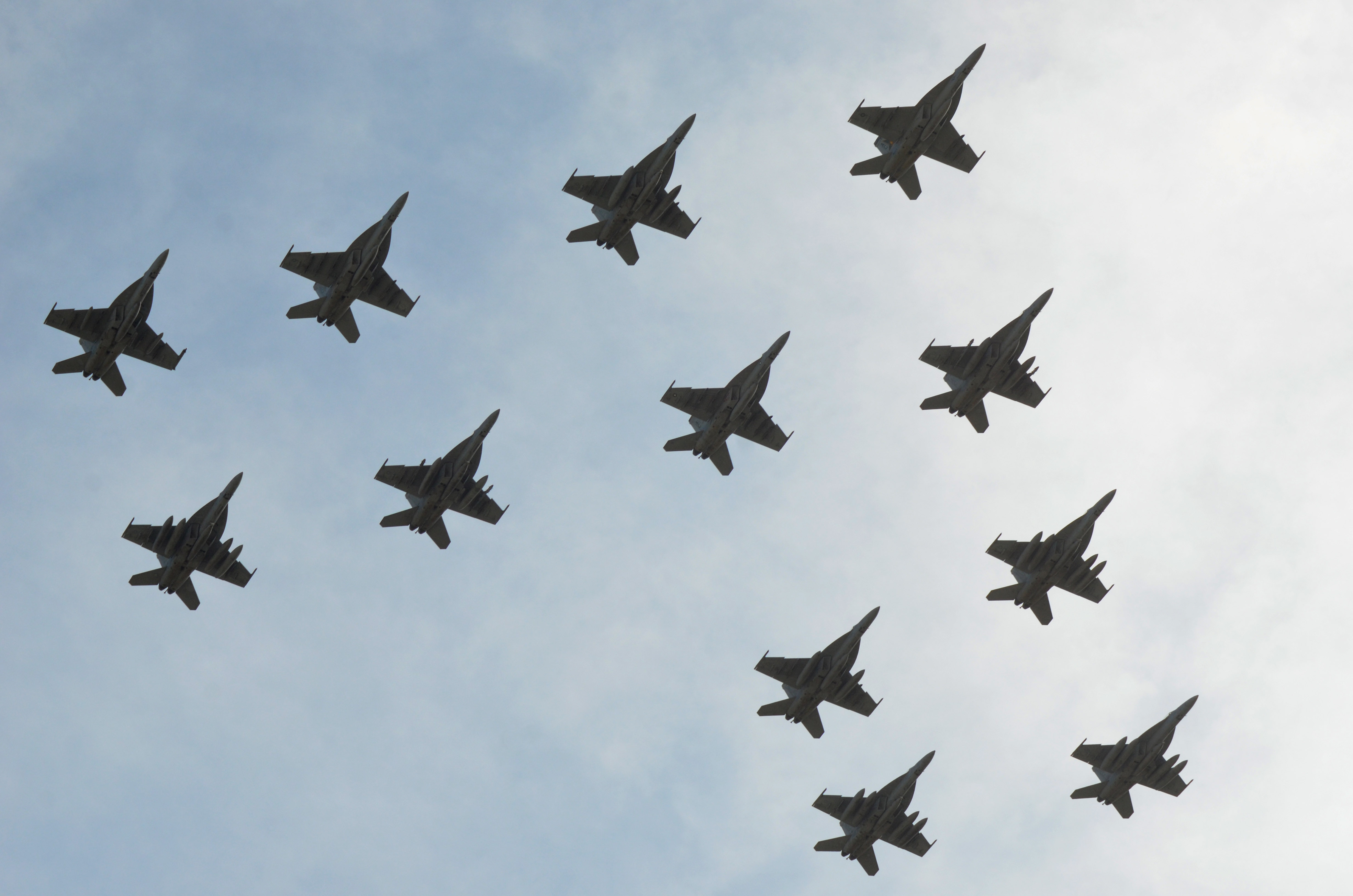
The aircraft carrier, particularly the carrier strike group (CSG), still fits the core Mahanian principle of destruction of the enemy’s fleet. It’s an excellent weapon in the U.S. arsenal, and for good reason. The carrier’s original purpose was, and still is—via its aircraft—to destroy enemy aircraft, naval vessels, and land targets. (Another just-as-essential carrier mission has forever been protection of the CSG itself.) In WW II, the classic era of the carrier, these ships extended the striking distance of the fleet well beyond surface combatants sporting naval artillery, much of which was line of sight or just beyond the horizon. Carriers also had some stealth, speed and a deep reconnaissance function that supported the force application function of the fleet overall.
Regarding extending strike distance, take for example the Battle of the Coral Sea (May 4-8, 1942), the first non-line-of-sight naval battle in history. There, Japanese and American carrier-borne aircraft attacked each other and their mother ships at a distance of around 250-plus miles, according to Richard Natkiel’s Atlas of Battles.
Both navies each lost a destroyer and a carrier (USS Lexington was scuttled), with several other vessels sunk and damaged. During the Battle of Midway (June 4-7, 1942), U.S. carrier aircraft flew about 170 miles to attack Japanese carriers.
The U.S. lost a carrier, a destroyer, and 150 aircraft. Japan lost four carriers — the heart of its national carrier force — and, according to master military historian Russell F. Weigley, the momentum of the entire war.
In the future, there will be war scenarios where enemy carriers and their aircraft need to be destroyed, and U.S. carriers can help facilitate that end.
Carriers have proven their worth against surface combatants as well. The two largest battleships ever to set sail, the Imperial Japanese Navy’s (IJN) Musashi and Yamato, were both destroyed by U.S. carrier air power; the former in October 1944 during the Battle of Leyte Gulf, the latter in April 1945 during the battle for Okinawa.
In the future, there will be war scenarios where enemy surface (and subsurface) ships need be destroyed, and U.S. carriers can bring about that result.
Regarding land strike, the highly destructive carrier raids on the IJN ports of Truk and Rabaul in the Pacific War further demonstrate the utility of the aircraft carrier. Rabaul was a port town on the east end of New Britain Island in Papua New Guinea. It was also Japan’s main forward base for its offensives against the Solomons and New Guinea.
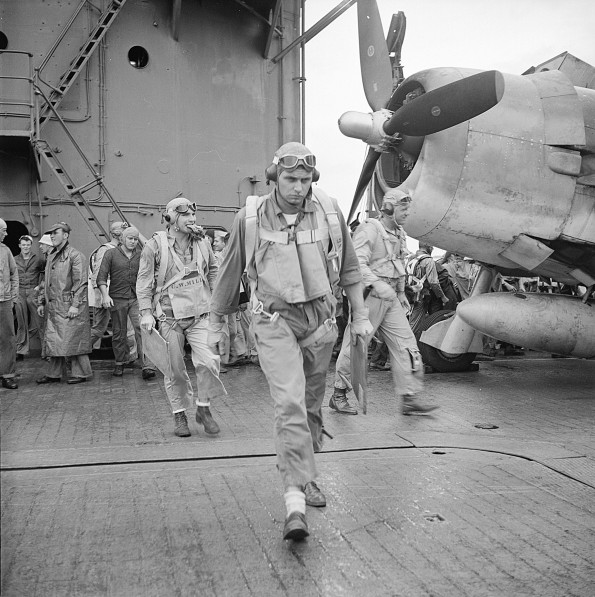
From Nov. 2-11, 1943, both U.S. land and carrier-based aircraft attacked Rabaul’s port and land facilities, damaging 6 cruisers and destroying 52 aircraft.
Strikes on Rabaul helped facilitate air and sea isolation of 10 islands and other critical objectives for Operation Cartwheel, which entailed scores of amphibious attacks stretching from New Guinea to the Solomons.
As an aside, air and sea isolation means destroying enemy ships, aircraft, and other weaponry that threaten amphibious landings and other naval operations so they can proceed without being attacked by air and sea. Amphibious operations in particular already have to contend with shore defenses, and they don’t need additional enemy pressure mucking up their ship-to-shore movement, the most fragile phase of amphibious landings. Ship-to-shore movement has to be protected at all costs, and without sea and air isolation, amphibious operations are folly.
Truk lagoon in Micrionesia, 600 miles north of Rabaul, was the IJN’s forward fleet base in the Pacific. It housed more than 27,000 men and every type of ship in the IJN, including merchant ships. U.S. carrier aircraft attacked Truk on Feb. 17, 1944 as part of Operation Hailstone.
The task force consisted of five fleet and four light carriers and their 500 aircraft, plus support vessels such as battleships, cruisers, destroyers, and submarines. Hailstone destroyed 12 naval vessels, 32 merchant ships and 275 aircraft. The end result was the elimination of Japan’s forward Pacific base, which took significant pressure off the seizure of the Marshall Islands via Operation Flintlock. It moreover created the largest underwater graveyard of ships in the world.
In the future, there will be war scenarios where enemy land-based targets need to be destroyed, and U.S. carriers can help facilitate that end. Carriers will also help achieve air and sea isolation for amphibious operations.
Threats that Change the Use of the Carrier
So how is today’s use of the carrier different from that of yesteryear’s?
Certainly, carriers can still attack enemy ships, aircraft, and land targets. That’s obvious. But advances in anti-ship cruise missiles (ASCMs), anti-ship ballistic missiles (ASBMs) – specifically by the Chinese—and their probable tactical application of swarming (or saturation) have changed the chessboard, so to speak, altering the past role of the carrier that many assume still holds the van as it did in WW II.
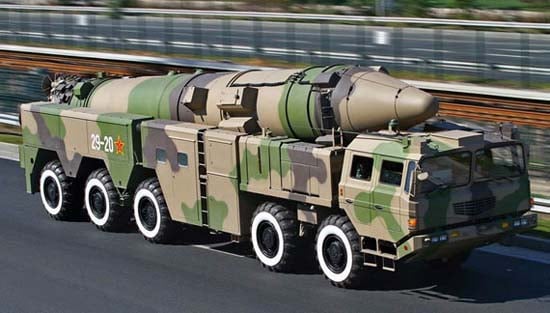
Advances in Chinese anti-ship missiles have been well covered as of late by a host of experts. (Modern Chinese torpedoes and other, like naval weaponry, are critical issues, too, but that’s for another article.) The DOD’s annual “Military and Security Developments Involving the People’s Republic of China 2014” puts the threat in plain terms, as do military writers Zachary Keck via The Diplomat, and Robert Haddick via War on the Rocks. Military scholars Dennis M. Gormley, Andrew S. Erickson, and Jingdong Yuan provide additional technical data on these threats in Joint Forces Quarterly, and Robert Farley follows suit in The National Interest.
The general consensus is that today’s naval missile ordnance, specifically ASCMs, is far more dangerous than the weaponry of yesteryear’s capital ships. Chinese ASCMs can be fired from sea, air, or land. They can moreover send a 100-plus kilogram warhead more than 200 miles at both sub and supersonic speeds.
This is a phenomenal advance over a World War II battleship’s 12 and 16-inch guns, the latter of which could shoot a 2,700-pound shell more than 25 miles at 2,500 feet per second.
Robert Haddick deftly suggests a worst-case scenario where China’s YJ-12 ASCM, with a range of 400 kilometers, is launched beyond America’s Aegis Combat System’s range, leaving a carrier group little warned of an attack, allowing just 45 seconds to react.
Interestingly, the advanced ASCM signifies that the dreadnaught or battleship concept—trounced by the carrier in WW II—is reborn and transformed, this time without the heavy armor. The gunboat, or more specifically, the missile boat, is back with a vengeance.
Chinese ASBMs are similarly lethal. The DOD says that China’s CSS5 Mod 5 (DF 21D), nicknamed the “carrier killer,” can target carriers from 932 miles and kill them with a single hit. Robert Farley asserts this missile can shoot more than 1,000 miles.
The DOD says China is deploying other ASBMs that can target ships out to 1,864 miles. Their payloads are 1,322.7 pounds of conventional explosives or a 500-kiloton nuclear warhead.
Interestingly, the Chinese deployment of ASBMs is an incredibly modernized version of U.S. Maj. Gen. Henry Halleck’s 1840s era coastal defense concept. General Halleck, a leading military thinker in the age of Mahan, asserted that coastal fortifications were superior to attacking navies.
During the American Civil War, the Union Navy’s guns, its amphibious operations, and land-based maneuver warfare—avoiding coastal forts altogether—proved Halleck wrong at the time. Because of ASBMs, however, disregarding Halleck now would be unwise.
Regarding anti-ship missile tactics, many analysts say the Chinese will swarm or saturate enemy carriers and other ships with their ASCMs and ASBMs, thereby overwhelming their sensors and weapons, dooming whatever flotilla they descend upon. This tactic is nothing new in naval warfare.
In the battle of Midway, for example, when Adm. Raymond Spruance figured Japanese carriers were within striking distance, he ordered that all of his aircraft from TF 17—carriers Enterprise and Hornet—launch for attack. This was 67 dive-bombers, 29 torpedo bombers, and 20 fighters. USS Yorktown later attacked with 17 dive-bombers, 12 torpedo bombers, and 6 fighters.

Spruance wanted as many Japanese carriers sunk as possible, so he swarmed them with his airpower. He sank all four carriers opposing him, plus a heavy cruiser. The Japanese acted similarly in attacking U.S. carriers. It should also be noted that these tactics left both U.S. and Japanese carriers highly vulnerable, as demonstrated by Japanese losses.
So missiles can now do a lot of what aircraft have traditionally done, only in some cases faster and farther. Driving the point home, Robert Haddick again dexterously proposes a worst-case scenario where the Chinese are likely to swarm 100 or so ASCMs from many directions against carrier groups, overcoming their defenses, and sinking them.
This is the kind of naval engagement that—like Midway—can change the direction of a war and force the strategic downfall of a country.
So the markedly increased distance, heightened speed, decisively destructive payloads, and swarm/saturation tactics of ASCMs and ASBMs have dramatically changed the tactical situation for carriers, and the rest of the fleet for that matter.
Those who assert that these anti-ship missiles checkmate the carrier are justifiably alarmed, but strategically and tactically mistaken. Airpower in naval warfare still matters. If America gets rid of the carrier, then land-based airpower will be its only recourse. While land based air power is essential to the naval warfare equation, it is static, which means it’s easier for the enemy to identify, locate, target, and destroy, especially with ballistic missiles. The carrier provides the criticality of flexibility in warfare. There’s no reason to take naval airpower tools out of the U.S. military toolkit.
Carriers in the Future
Having said this, the carrier no longer has the van in naval warfare as it did in WW II because of these new threats. Accordingly, there are nine strategic and operational carrier warfare concepts America must take into consideration as it moves forward.
- The carrier remains a useful weapon to destroy enemy ships, aircraft and land targets, the core purpose of naval forces
- Modern anti-ship missiles pose strategic, theater level threats to carrier operations—all naval operations, for that matter—as opposed to just tactical, operational level threats
- Modern anti-ship missiles significantly curtail the carrier’s use as a stealthy, deep strike and air/sea isolation weapon on its own, particularly in first strike scenarios
- Because of issue 3, a reasonable degree of both strategic and operational sea/air isolation (destruction of ASCMs and ASBMs, or cover from them) is necessary prior to carrier operations
- Because of issue 4, strategic and theater-wide intelligence preparation of the battlespace is critical to carrier operations instead of carriers carrying the naval reconnaissance van
- Carrier group anti-ship missile defenses—ideally integrated with those of other Services, including in space—need to be dramatically enhanced
- The defeat of anti-ship missiles requires a combination of strategic, theater level approaches with tactical, operational level approaches, including space
- The gunboat—or missile boat—has returned to a vanguard position in naval warfare since being dethroned by the carrier in WW II
- Modern, land based, anti-ship missiles—particularly ASBMs—have resurrected and upgraded Halleck’s coastal defense concept
Of course, many in the U.S. Navy are well aware of these issues. There is copious and frequent discussion of anti-access/area denial (A2/AD) threats amongst our white-uniformed brethren.
But whether these threats and new strategic realities are understood and accepted throughout is another matter. The same goes for the DOD. And do our civilian leaders fully grasp these new threats and operational concepts? It seems doubtful. More than 70 years of American blue-water naval dominance, the backbone of which has been the CSG, has led the nation to naval complacency.
To combat these new threats, the U.S. Navy is enhancing its own anti-ship missile capabilities, and in November 2014, Chief of Naval Operations Admiral Jonathan Greenert told an audience at the Brookings Institute that increasing the defenses of the CSG was a top priority. He even indicated by his tone that it was an urgent priority.
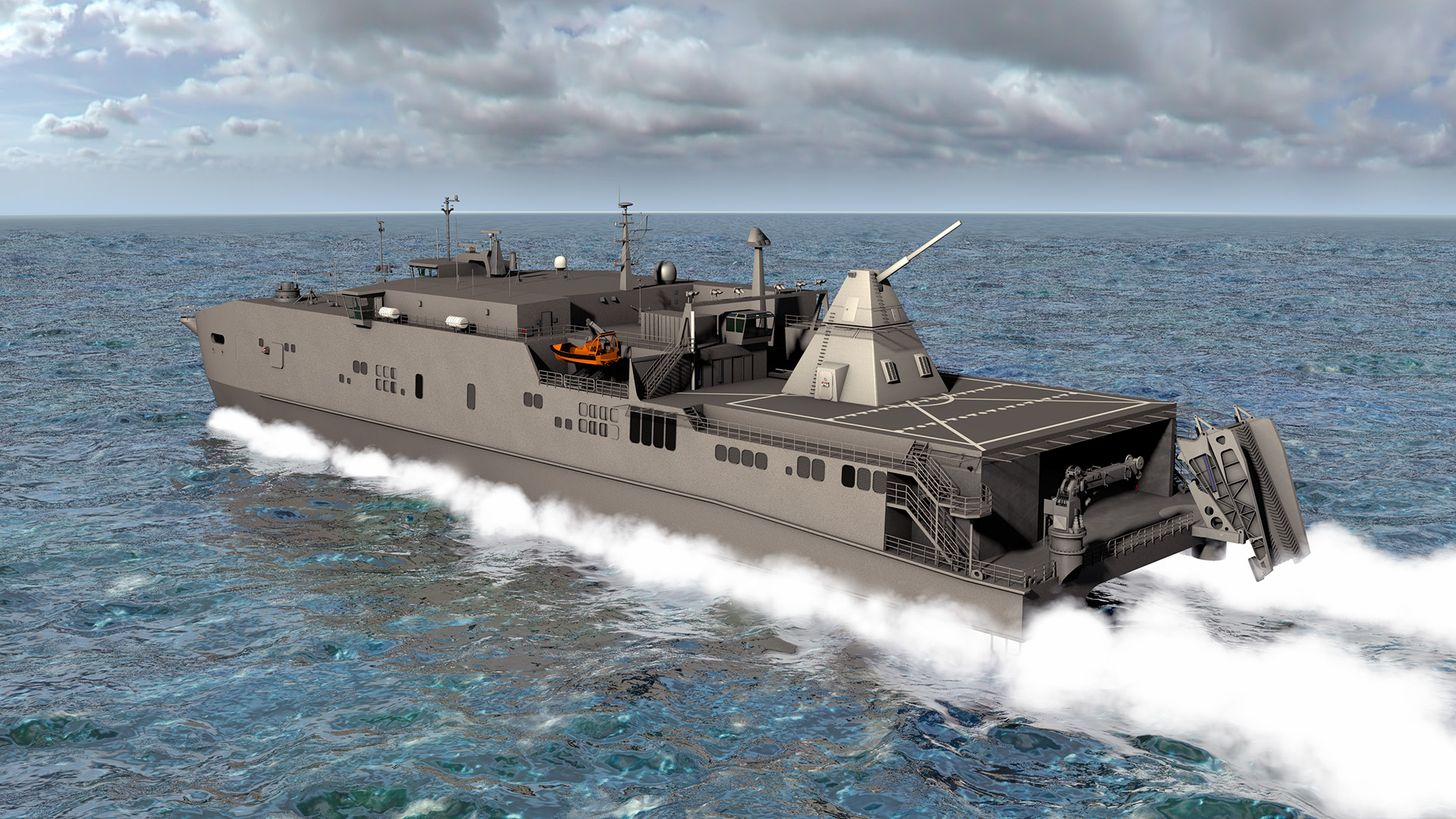
Additionally, the U.S. Navy is fielding a laser to counter various surface and airborne threats, its new rail gun is slated to be fitted on surface ships, and the Navy launched and recovered from a carrier its first Unmanned Combat Air System in August 2013 – though that program is apparently under contention. And then there’s the Air Sea Battle (ASB) concept that’s supposed to target the enemy more intelligently— its C4 ISR assets for example—via “kill chain” targeting priorities and the like.
All of this is well and good, but to get anything done in Washington these days, the problems and solutions need to be well described and absorbed with “Midway-like decisiveness” by the services, the DOD, and our highly dysfunctional political leaders. In this demoralized national security environment, however, can we get it done?
Rep. Randy Forbes (R-Va.), chairman of the House Seapower and Projection Forces Subcommittee, recently told Defense News that Capitol Hill would have to change its approach to make true progress. Says Forbes, “What we have historically done for the last five, six years on Capitol Hill is really backwards when it comes to defense. We have asked the question how much money do we want to spend on defense?” From there, he says, strategy was made. “We have to change the debate,” said Forbes, “to where we start talking about what our goals are for national defense.”
In the end, in order to avoid a Pearl Harbor type surprise and national, killer blow, America needs a good dose of “Midway-like luck” in getting its massive, stifling bureaucracy behind these new naval concepts. Can a Republican-led Congress do it? We’ll see. But one thing is for sure: the Chinese won’t wait for America to catch its breath and get organized. It’s modernizing and professionalizing its navy at high speed, come hell or high water.
Or both.




